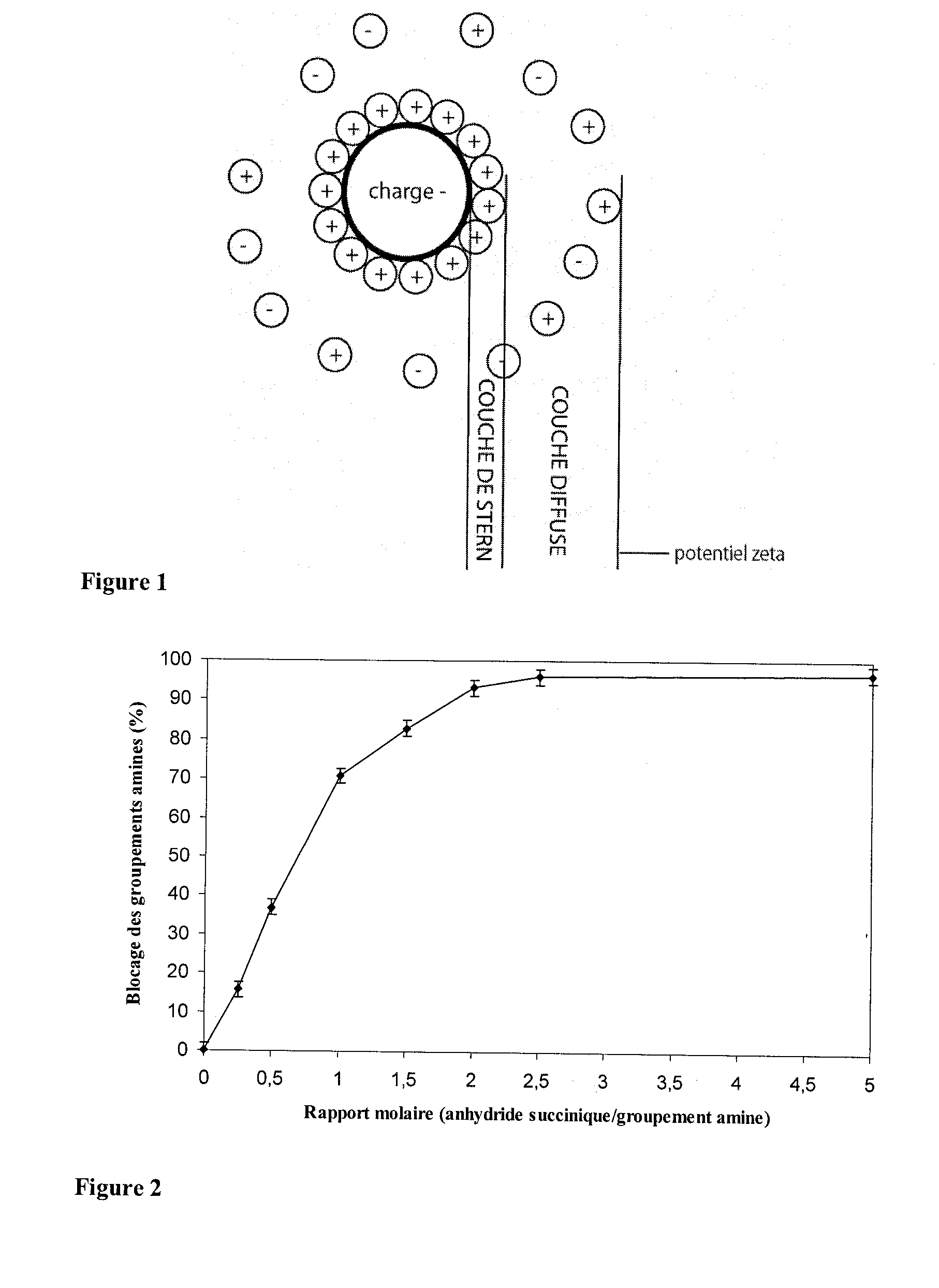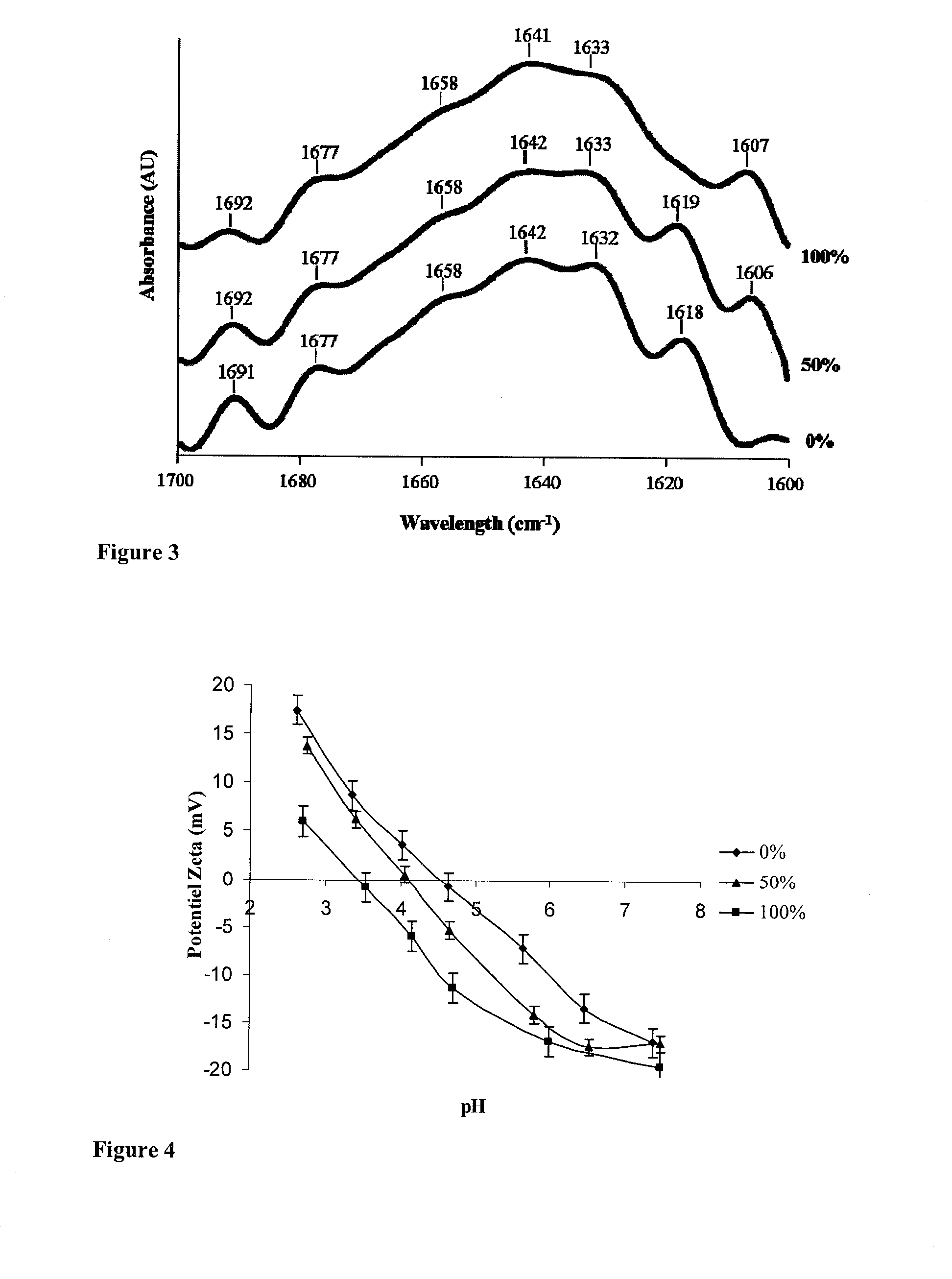Modified protein excipient for delayed-release tablet
a technology of modified protein and delayed release, which is applied in the direction of peptides, drug compositions, metabolic disorders, etc., can solve the problems of limited use of these drugs in other fields, including pharmaceutical applications, and achieve the effects of reducing the isoelectric point, reducing the solubility, and increasing the solubility
- Summary
- Abstract
- Description
- Claims
- Application Information
AI Technical Summary
Benefits of technology
Problems solved by technology
Method used
Image
Examples
example 1
Materials
[0071]The soybean isolate SPI 6000 used in the present study was a gift from Protient Inc. (Saint Paul, Minn.). Succinic anhydride was obtained from Fisher Scientific Inc. (Springfield, N.J.). Enzymes and other chemicals used for dissolution experiments were obtained from Sigma Chemical Co. (Saint Louis, Mo.). BCA (Bicinchoninic Acid) reaction kit was obtained from Pierce (Rockford, Ill.). Dialysis membrane were obtained from SpectrumLabs (Houston, Tex.). Tablets photographs were taken using a Canon Power Shot A75 camera (Canon Inc., Japan).
Chemical Modification of Soy Proteins
[0072]Soy protein modification was carried out as follows. Soy proteins were dispersed in water for 2 h at a concentration of 5%. Small amounts of succinic anhydride were added to soy protein solutions with constant stirring. During reaction, pH was maintained at between 8 and 8.5 with NaOH 2M. After the pH stabilized, the suspensions were dialyzed for one night at 4° C. (pore size 1000 Da) and were t...
example 2
Results / Discussion
[0090]Succinylation is a chemical modification which should not cause problems when ingested in the form of compressed tablets because succinic anhydride, which could eventually be left after the reaction, is converted into succinate which is a component of the oxidative metabolism.
Trials with Various Molar Ratios
[0091]In order to obtain solutions of succinylated soy proteins with exact yields, we prepared solutions of succinylated soy proteins with various molar ratios of succinic anhydride:amine groups.
[0092]To determine the extent of blocking of the amine groups by succinylation, the OPA method was preferred instead of dosing with ninhydrine since the latter method appeared to be less efficient (Panasiuk et al., 1998). Another method could have been considered: dosing with 2,4,6-trinitrobenzenesulfonic acid (TNBS). This method performs similarly as the OPA method (Panasiuk et al., 1998).
[0093]FIG. 2 shows the extent of blocking of the amine groups on the basis o...
example 3
Gastric Protection of a Probiotic
[0119]One aspect of this experiment was aimed at determining bacterial survival following gastric passage of 30, 60 or 120 minutes, and another aspect was geared towards determining the impact of percent succinylation of the protein (β-lactoglobulin at 0, 50 et 100%) on tablet gastro-resistance. 400 mg tablets containing 10% of lyophilized bacteria and formed at 67 MPa for 30 sec were used.
[0120]Formed tablets were incubated in 400 mL of SGF to which about 1.28 g of pepsin was added. The incubation was carried out under constant stirring (about 160 rpm), at 37° C. during 30, 60 or 120 minutes. The tablet was then transferred in 25 mL of SIF (without enzyme) and then was vortexed until complete dissolution of the tablet and / or suspension of the solid. This suspension was then diluted in series (by factor 10) and then 1 mL of chosen dilution was seeded in duplicate. Sedding was carried out in MRS medium+0.05% cystein-HCl. Petri dished were incubated at...
PUM
| Property | Measurement | Unit |
|---|---|---|
| Fraction | aaaaa | aaaaa |
| Fraction | aaaaa | aaaaa |
| Acidity | aaaaa | aaaaa |
Abstract
Description
Claims
Application Information
 Login to View More
Login to View More - R&D
- Intellectual Property
- Life Sciences
- Materials
- Tech Scout
- Unparalleled Data Quality
- Higher Quality Content
- 60% Fewer Hallucinations
Browse by: Latest US Patents, China's latest patents, Technical Efficacy Thesaurus, Application Domain, Technology Topic, Popular Technical Reports.
© 2025 PatSnap. All rights reserved.Legal|Privacy policy|Modern Slavery Act Transparency Statement|Sitemap|About US| Contact US: help@patsnap.com



